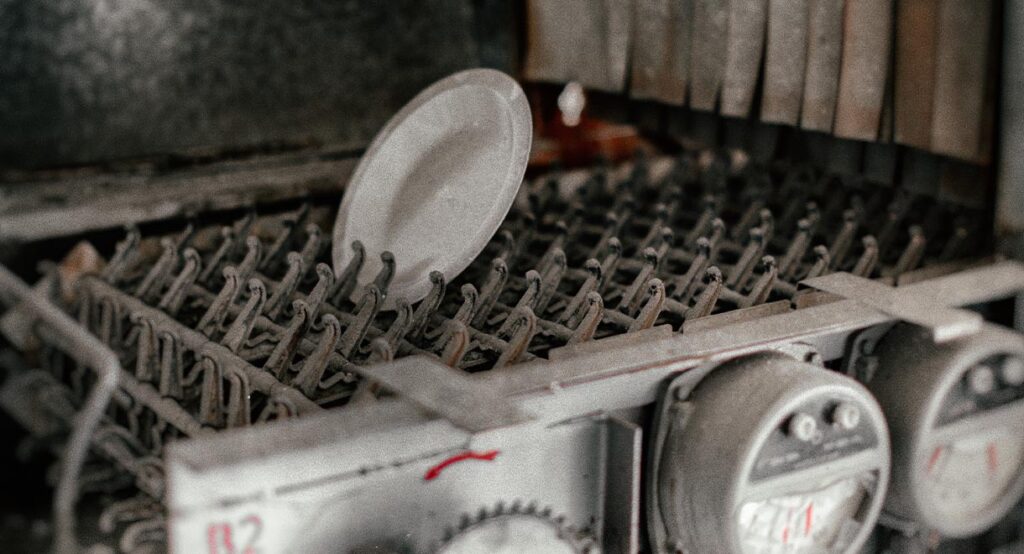Is Drano a suitable remedy for a clogged dishwasher that can cause flooding and dirty dishes? Dealing with a clogged dishwasher can be a frustrating experience. Putting Drano in a dishwasher is never a good idea, as it contains several toxic chemicals that can remain in your dishwasher for a long time.
Additionally, Drano might not resolve your dishwasher’s problems, making it a subpar remedy for dishwasher drainage issues.
Is Drano Safe To Use In The Dishwasher
Drano is a popular drain cleaning product designed to break down grease and other blockages within pipes, allowing them to be washed away cleanly and freeing up any clogs.
Many wonder if you can use Drano to unclog a dishwasher that has developed a blockage or is not draining properly.
Dishwasher clogs cannot be removed by Drano. The obstruction may exist away from the dishwasher unless a mechanical problem exists. If your dishwasher won’t drain, start by inspecting your sink to see if the drainpipe is clogged. Your garbage disposal, if your dishwasher drains into it, might be clogged, making it impossible for the dishwasher to drain.
The truth is, you can not use Drano in a dishwasher. Dishwashers should not be used with Drano’s active chemical components. Drano is highly likely to severely damage many components and operations of a dishwasher because it is corrosive and caustic.
Drano works wonders at clearing clogged pipes that have been clogged with debris like food, grease, or hair. Still, none of these blockages are likely to occur in a dishwasher, making Drano an ineffective solution for this problem.
Dishwashers do not drain simply by gravity; instead, they use an internal drainage pump that expels the water from the machine. Therefore, all of the water that exits a dishwasher must go through this pump.
Either the drainage pump has a blockage or the pump has stopped working. Therefore, using Drano to clear a blockage in a dishwasher drainage pump is not ideal, as it will cause significant damage to this vital component.
What To Do When Your Dishwasher Isn’t Draining
Slow draining, standing water, grunting noises when draining, water backup, and even dirty dishes are indications that the dishwasher is clogged.
Here’s how to solve these issues at home, then when all else fails, seek professional assistance.
To begin, turn off the power supply before doing anything else.
Check For Slow Drainage In The Kitchen Sink
It’s likely that your kitchen sink has the same issue as your dishwasher if you’re having slow drainage there.
If water drains slowly after you try to drain it, there is likely a clog in the plumbing system between the sink and the dishwasher.
To handle this kind of issue, it is best to call a qualified plumber. In addition, you can use other sink unclogging tools like a drain snake or pour a drain cleaner down your skin in accordance with the product’s instructions.
You can also try running some water through the garbage disposal to see if that works.
Check The Coarse Filter At The Bottom Of The Dishwasher
You will have to deal with water buildup or slow drainage if the filter becomes clogged over time from accumulating small food particles.
Additionally, if the filter is not securely fastened, small food particles may escape and enter the circulation system, as well as the drain pump and inlet valve on the hose, where they may eventually clog the system.
If the strainer is really dirty, use a nylon brush in conjunction with running water to clean it, as directed by the manufacturer. The filter will be able to breathe easier as a result.
To avoid any chance of blockage, make sure the filter is securely locked back in place. For information on how to lock in the coarse filter properly, consult the manufacturer’s instructions.
Clean The Fine Filter
Not only the strainer but also the upper filter, can cause slow draining. To avoid buildup and clogging, be sure to clean it thoroughly and secure it in place.
Check And Clean The Drain Sump
Don’t wash the strainer and upper filter after you remove them; instead, take your time checking the drain sump for obstructions and buildups.
The standing water should be removed first, followed by any residue, glass, or stickers from plates or cups, which should be removed. Before replacing the filters, make certain the sump is thoroughly cleaned.
For removing debris from difficult-to-reach areas, use a straightened clothes hanger. Just be very careful not to damage delicate components.

Inspect The Drain Hose
Clogging is typically caused by a blockage or issue in the drain hose. First, check for any loops or kinks; if any are discovered, reposition the item in accordance with the manufacturer’s recommendations. Then, if that didn’t solve the issue or didn’t work, disconnect the hose from the machine and the sink on both ends, and clean it with a water jet from another hose, i.e.e a garden hose.
A straightened clothing hanger can also be used to clear clogs. Just be careful not to poke any holes in it, as that would mean you’d have to buy a new one.
To catch unanticipated leaks, it’s a good idea to place bowls at the hose connections to drain pumps and sinks.
Thoroughly Clean The Drain Pump And Non-Return Valve
If particles have somehow made their way into the drain pump and non-return valve, which are typically held and hidden away by the sump, that could be another good reason why you have standing water that won’t drain away.
When you’ve done everything listed above, particularly cleaning the filter, and water is still accumulating when you run the dishwasher, it’s time to look at the more obscure parts.
The filter combo conceals the drain pump and valves.
The easiest way to clean them is to simply “clean the drain sump,” as we previously discussed.
This entails taking off the filters, sucking up the water with a sponge, and cleaning out all of the cracks and crevices you can find to get rid of food particles that have become lodged there.
You must open the access panel and reach the pump and valve from underneath just like you would the hose in order to perform the more thorough cleaning, which calls for some technical aptitude.
Check that the non-return valve is working properly by removing the hose from the pump. It should only direct water toward the sink or garbage disposal, not the other way around or both ways.





